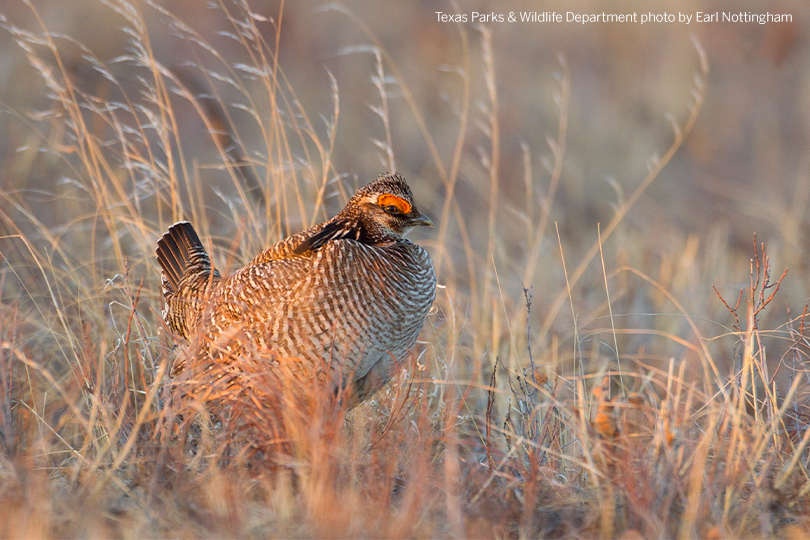By Jessica Domel
Multimedia Reporter
More than a year after public comment closed on the topic, the U.S. Fish and Wildlife Service (FWS) announced in mid-November it listed two distinct population segments of the lesser prairie-chicken under the Endangered Species Act.
The southern population segment, which includes lesser prairie- chicken populations in eastern New Mexico and the southwest Texas Panhandle, has been listed as endangered.
The northern population segment of lesser prairie-chickens has been listed as threatened. That population segment includes the prairie-chickens in southeastern Colorado, southcentral to southwestern Kansas, western Oklahoma and the northeast Texas Panhandle.
According to FWS, the listings are needed as lesser prairie-chicken populations have declined drastically over the years due to habitat loss and fragmentation. The agency said lesser prairie-chicken habitat has diminished across its historical range by about 90%.
Aerial survey results from 2012-2022 estimate a five year average lesser prairie-chicken population of 32,210 across five states.
The service reports that a review of past, present and future threats to the lesser prairie-chicken finds the southern population segment is in danger of extinction, and the northern population segment is likely to become endangered in the foreseeable future.
U.S. Rep. August Pfluger of Texas said the move will have a disastrous impact on energy and ag production.
“This decision will wreak havoc on our local and state economies and make it even harder to produce oil and gas in the midst of an energy and economic crisis,” Pfluger said. “President Biden needs to get out of the business of over-regulating and focus on unleashing American energy dominance. The federal government must do so in a balanced manner through ongoing local and state conservation efforts. We can protect important species without devasting our local and rural communities.”
Texas Farm Bureau (TFB) is also opposed to the listing, citing concerns with how it would impact animal agriculture.
“We are deeply disappointed by the endangered and threatened listings. Farmers and ranchers have enrolled hundreds of thousands of acres in conversation programs that have helped recovery efforts. Unfortunately, lesser prairie-chickens are highly susceptible to drought, and 2022 has been an extremely difficult year,” Jay Bragg, TFB associate director of commodity and regulatory activities, said. “There is also concern that the endangered listing may disincentivize voluntary conservation efforts due to liability risks and take provisions associated with the Endangered Species Act.”
FWS also announced it is finalizing a section 4(d) rule designed to conserve the northern population segment of lesser prairie-chickens while allowing greater flexibility for landowners and land managers.
The 4(d) rule allows farmers to continue their routine agricultural activities, according to FWS.
“Farmland is not considered habitat and grazing is generally beneficial, as long as areas are properly rotated and not over-grazed,” Bragg said. “As such, FWS issued a 4(d) rule to provide incidental take protections for farming activities and grazing that is done in accordance with a grazing plan developed by a FWS-approved provider.”
Allowing third-party verification is concerning as it could allow non-friendly organizations to control agricultural practices. TFB will be monitoring this issue closely.
TFB believes to truly support lesser prairie-chicken habitat, FWS should make it easier for ranchers to graze, not more difficult.
The listing goes into effect Jan. 24.
TFB will host an information webinar on the listing on Monday, Dec. 19, from 3-5 p.m. Click here to join the zoom. Pre-registration is not needed.

